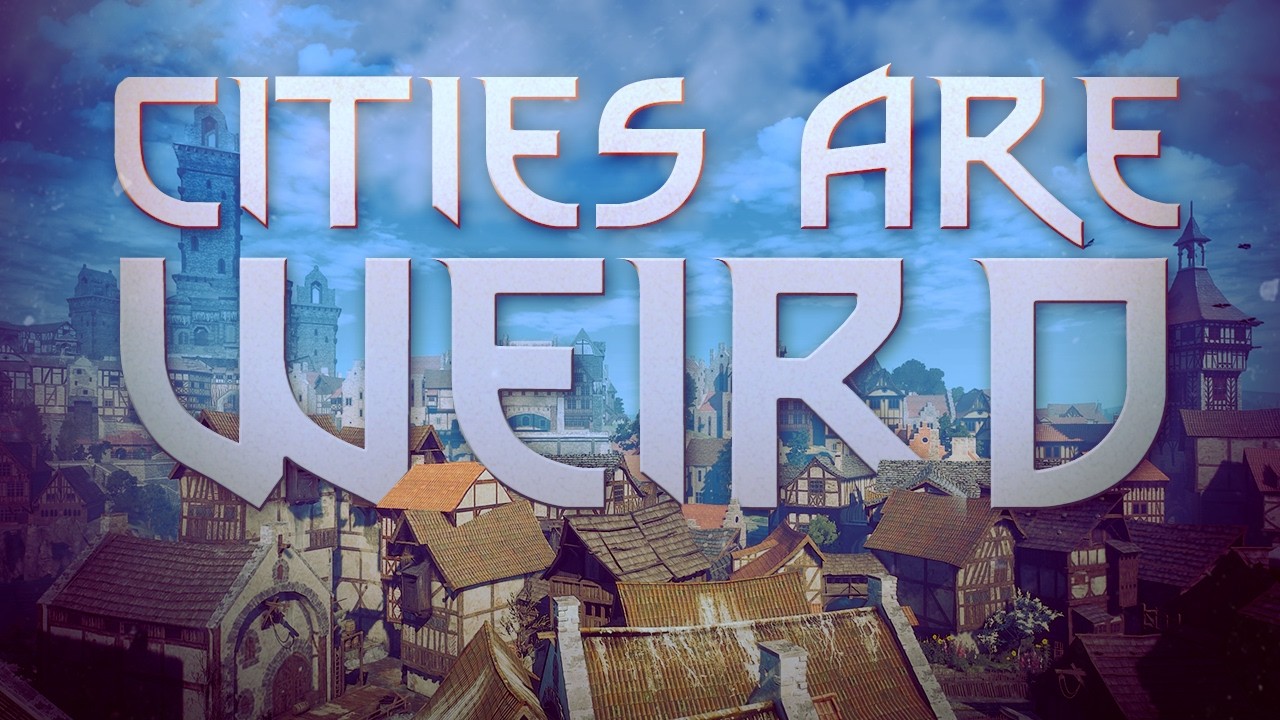- cross-posted to:
- [email protected]
- cross-posted to:
- [email protected]
Great video. I would love to have a fully simulated video game city, I know it would be horribly inefficient… But still it appeals to me
Semi-relatedly, but totally tangential:
I have a dream town that I visit pretty regularly (but randomly, unfortunately). I’d love to make it a VR town, but haven’t the skills. I think it would be perfect as an exploration experience, since it’s pretty fleshed out, but I’m not sure if the tech is really there yet, and if it is idk how to use it.
It has all the qualities of a real town (but a lot more… grand? In some ways), tho as far as I can tell many of my residents are homeless as there simply isn’t enough space for all of them to have their own place (it’s never been rendered by my mind, so it doesn’t exist)… It’s authentic mostly because I typically experience it the way I do the world; first person recluse (tho I do have a mini-map sort of sense for the layout, so that absolutely wouldn’t be out of place). For example, when I go to the mall, school, or a restaurant or something, most of the people are doing normal people things and have no real interest in interacting with me. They will if I bother them, but like real people, they get annoyed, or it’s a passing interaction. It’s a small town vibe sort of place (loosely based around a mesh of every town I’ve lived in), so you start to recognize people from where they hang out, and can interact with them from there. I have one older gentleman I talk to quite a lot, and a variety of very nice employees of the places I frequent. But bar patrons don’t bother me. Like I said, dream.
Unfortunately it’s really a slice of life town, nothing interesting ever happens, it’s sort of an exploration escape, and I couldn’t think of anything interesting to happen there if I tried. It would be great for collectibles, though. The house is really the fun bit for me, because while there, I understand that this is -my- house even when I’m in a new room I’ve never seen before. And then once I figure out where it belongs in the structure (often a landing room that has several stairways and doors) that room just is part of my house forevermore. Same thing happens with the round mall; some features are permanent, everything else gets added on and becomes cannon.
And I have no idea how to create it in VR… if I did, that would be awesome, especially if I could make it grow with time (dlc?), like my town does. I think a lot of people would enjoy exploring it, and maybe even identify with my weird labyrinthian house (it canonically has three floors officially but about a dozen representationally, and don’t even get me started on the weird college and dorm towers I’ve come up with…), or the circular mall with a free-use sports arena in the middle, and an arcade in the basement. Or any of dozens of local shops and eateries.
I wish AI was better so if I ever did figure out how to build a whole town and make it interesting to explore, the people could stay interesting. But I’ll never overcome the “how to build in VR” portion, so it doesn’t matter.
Shenmue does a decently good job. NPCs have their own schedules, only being found in certain places at certain times.
Shenmue looks neat!
in the video they use witcher 3 as an example; and it works as long as you dont focus on it, but if you follow someone around, their schedule breaks down (like washing clothes in every water basin they come across)… i wonder how well the sims does it?
I’ve considered building something like this. Basically:
- NPCs will gather materials, produce wares, stay inside at night, spawn chidlren, and be permanently killable
- you play in an MMORPG setting as part of a faction, and you work w/ your faction to protect your sims
- object of the game is to control and protect the most cities
However, there must be a reason this doesn’t exist. Perhaps it’s too computationally intensive to simulate an entire city? Or maybe the gameplay ends up not being very fun? Idk, but I think it would be really cool.
I’m sure there are efficiencies to be found that would make simulating it viable. It’s graphics that are compilationally expensive, far more so than simulation, I think. Shadows of Doubt does it!
Most video game developers are not great computer scientists. I’m not saying this with any dispersion, but it’s true. If you’re going to have a distributed agency model simulated, you have to deal with cross-processor, cross thread, or even cross machine, data structures. Either a lockless data structure, or some locking mechanism that doesn’t have a tremendous critical path. It could be outsourced to a database outside of the game engine. But it gets computationally complex
Something like this https://aeplay.org/citybound
Or even dwarf fortress
I can believe that. I focus on data science so these things seem (relatively) simple to me… or perhaps not simple, but exciting to work with haha! But then I’ve looked with horror at the things you have to write to get graphics working.
Red Dead Redemption 2 also does this to an extent
Goodlooking bearded able-bodied white men everywhere!





